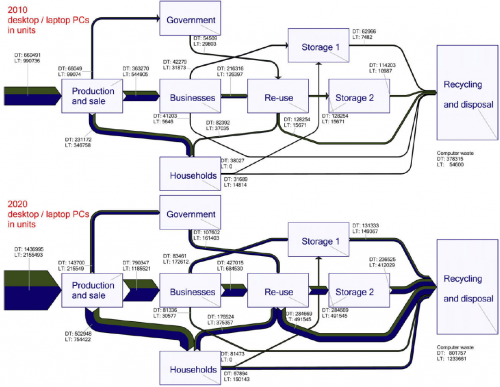From what I know, France’s approach to tackling energy and waste issues is to break the topic down to the regional level, and to involve local stakeholders.
It discusses the ‘Territorial metabolism and recovery-recycling chain: the example of Waste Electrical and Electronic Equipment (WEEE) in the “Midi-Pyrénées” region and has the following Sankey diagram figure.
Licensed under CC BY-NC 4.0
WEEE waste streams are in kilo tonnes (kt) in the year 2008. Additionally, recovered energy from waste treatment is shown (in MWh) with orange arrows. The red line delimits the region, so apparently the electronics waste recycling and disposal (élimination) takes place outside the Midi-Pyrénées region. Some flows are labeled with a range (e.g. 6-14 kt), which is obviously difficult to draw as Sankey arrow. My guess is that the median value was used to determine the actual width of the affected arrows. A nice feature are the per capita values (e.g. 2-4 kg/hab), which makes it much easier to grasp and to relate to for the indivdual person living in Midi-Pyrénées.


